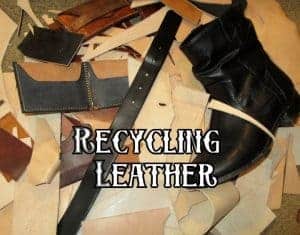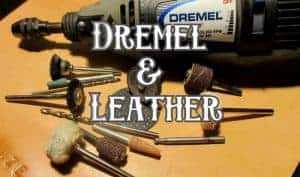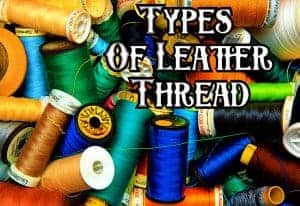
Split Grain Leather Guide
I always wondered why certain leather items I had just lasted longer, even when they went through the same wear and tear as a competing product. I assumed that leather all came from the same place, so if I got a pair of work boots and a pair of gloves that came from the same cow, they would wear out evenly.
This is not entirely true. The main reason why my leather goods didn’t always age at the same rate is that, while they may have come from the same cow, they didn’t come from the same part of the hide.
Bottomline Upfront
Split grain leather is a piece of leather that has been split into two sections. The bottom is called the split grain or split leather section. It is weaker and thinner than the top grain, but it works well for cheaper manufacturing, especially for leather interiors on furniture, in a car, or small items like boots and bags.
Sections of Leather
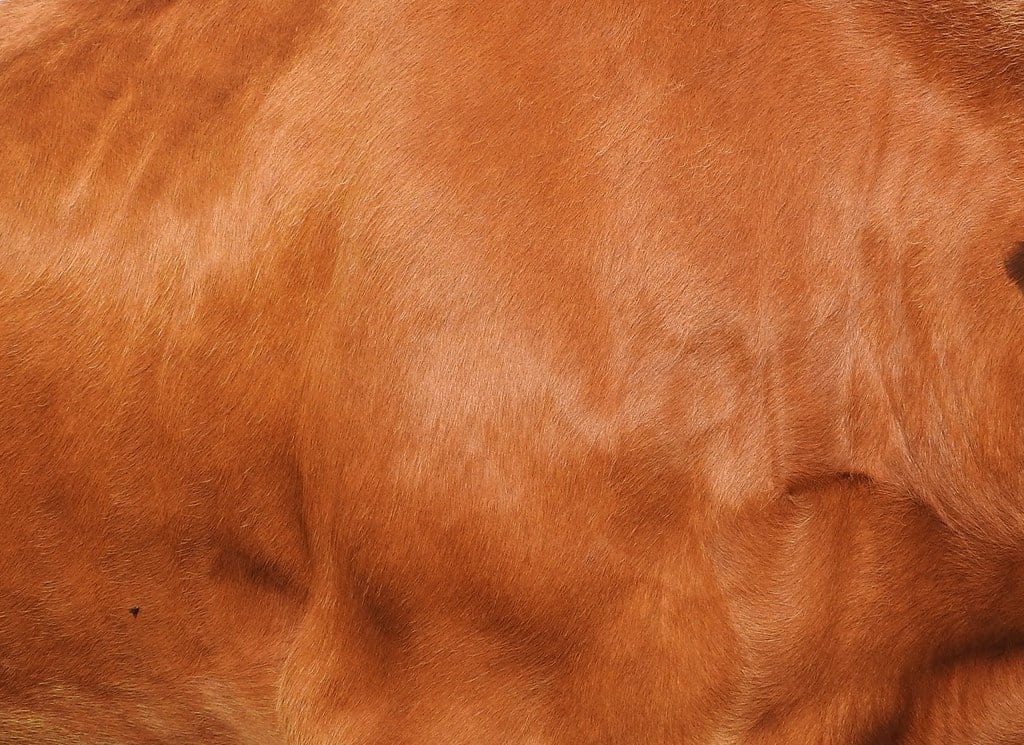
When you look at a piece of rawhide, it’s not just one piece; it’s actually three.
- The first layer is the fleshy layer. It has very tight fibers, and it makes up the inner skin.
- The second layer is the thickest. It’s called the corium. The fibers have an open structure and a thick, cushioned barrier. This section is referred to as split leather.
- The third layer is called the grain. If something is made entirely out of the grain, it’s referred to as full-grain leather.
Other Names
After the split grain leather is processed in a tannery, it is often called suede or split leather. So if you see something made from suede, it is a split grain leather. Other popular names for split grain leather include:
- Nappa leather
- Napa leather
- Aniline leather
- Smooth leather
It can be difficult to determine whether you have a split leather product because so many different names are used in place of the term “split leather,” but if you know a bit more about the features of your leather product, you might be able to find one of the other names by which it is called or see something in the description that identifies it as having a PU film or even see the embossing on the outside.
Which Section is Best
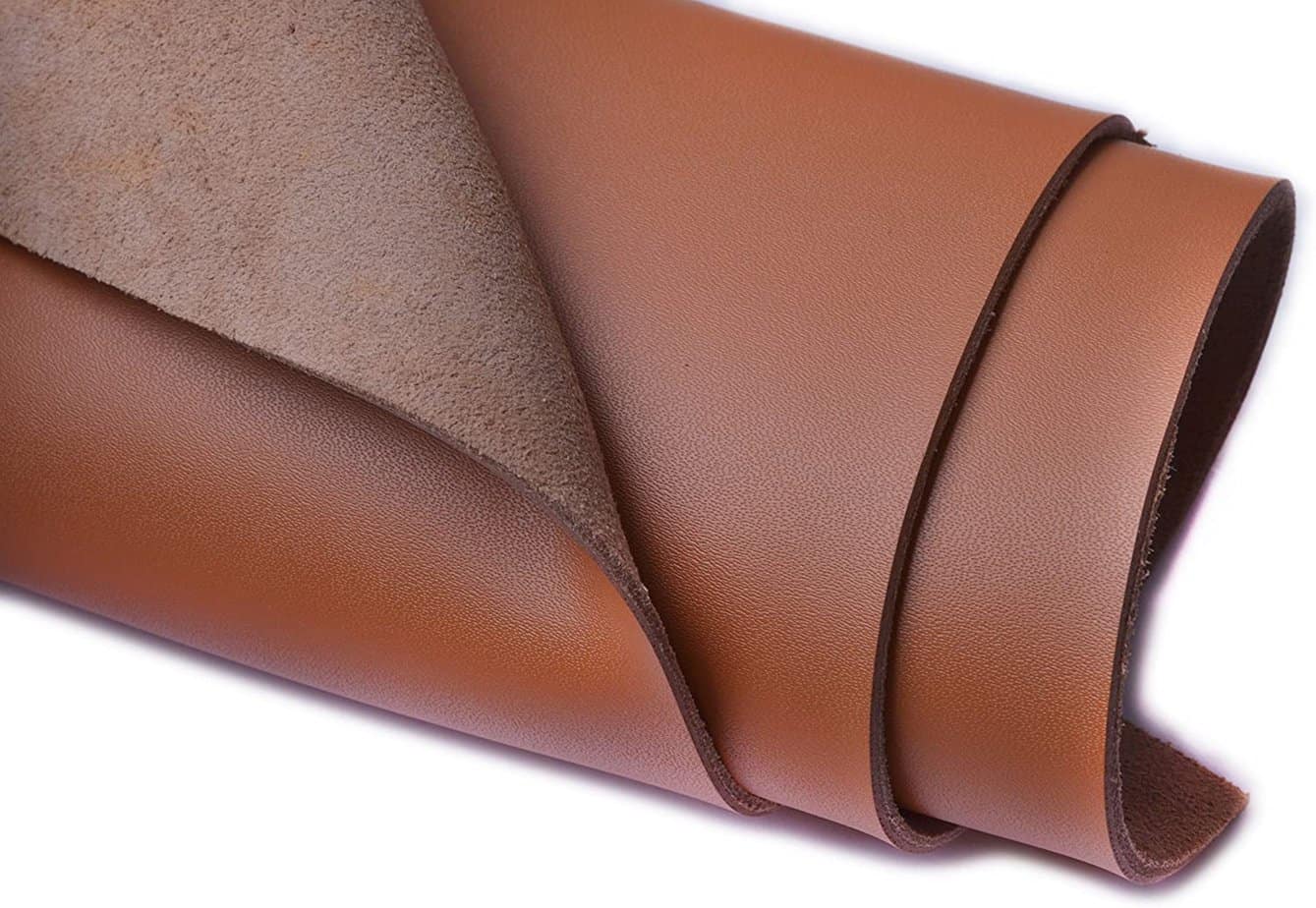
If you ever see something called “genuine leather,” it can be any part of this rawhide, any of these three, which is why high-end companies will specify which of the three it actually is.
The same is true for something labeled “full grain leather”; it can technically be any of these three sections, and not all three sections are made the same.
In order to better understand split-grain leather, we have to review of it how a hide is split.
A leather splitting machine, called a splitter, is used to cut a hide horizontally so that there are two sections: the bottom cut and the top cut.
- The top cut is usually called full grain or top grain.
- The bottom cut is thinner and weaker, usually called split grain.
By splitting the leather, the split grain leather is less resilient, and it’s not as thick as you would expect in common leather products like gloves and shoes. So, the top surface gets treated with a plasticized paint finish or a polyurethane finish and embossed with a grain pattern. This makes it look exactly the same as full-grain leather but costs a fraction of the price.
Growing up on a very tight budget, having genuine leather products was never a common occurrence for us, but after I got my first job and went to Ross, I was surprised to see just how cheap leather bags, shoes, and wallets actually were.
I kept looking at the cheaper versions compared to the expensive (top-grain) versions, and I didn’t see a difference. They looked the same except for that price tag. So I bought a cheaper wallet which I loved, but after about three years, it became so brittle that pieces on the outside flaked right off and what was left was a very thin layer that kept tearing.
By comparison, the more expensive top-grain replacements that a family member bought for me as a gift hasn’t shown the slightest bit of age, even though it’s about eight years old.
Film and Embossing
When I looked at my cheaper wallet, what I didn’t realize at the time was that I was looking at a PU film embossed with a grain pattern. Embossing means it’s basically stamped onto the film. Then that film and the split leather are heat bonded, so the inside has that fuzzy texture, but the outside has a flat film with a grain pattern printed on top. This is technically a genuine leather product, but it’s not full-grain leather.

This wallet is a great example of that embossing, as is this purse.
So, when my wallet started falling apart, it was that plasticized film that was breaking off in flakes, and what was left was the very thin, weak piece of split grain leather that started to tear without the structural support of the film.
Note: Sometimes embossed split-grain leather also refers to not just a grain pattern but a stylized pattern like the compass you can see in this journal. This serves the same purpose: strengthening the thinner, weaker split grain, but it also looks beautiful.
Cleaning and Maintenance
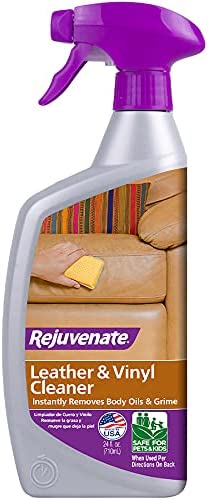
The way you clean and maintain your leather products will hinge heavily on whether it has any type of film or embossing. If it does, the plasticized film is a lot easier to clean. So, for example, if you have a wallet or a purse made with split grain leather that has a plasticized exterior, you can wipe it clean with a damp cloth.
However, if it doesn’t have that extra coating, which, again, you’ll notice because it has a soft, fuzzy texture, you’ll have to be a bit more careful about cleaning your leather.
- You can find leather cleaner spray for things like upholstery or furniture.
- Weiman makes great leather cleaning and conditioning wipes, especially for shoes, purses, and car interiors. They also make a spray version.
- You can also find leather conditioner care kits.
This video shows how to clean leather:
Cost and Quality
I don’t want you to get the idea that split-grain leather is somehow bad. It’s a perfectly effective, widely popularized use of leather. You can find things like work boots, work gloves, purses, wallets, and journals made from high-end split-grain leather with realistic and bossing and a plasticized film for structural support.
Any of these items will cost you much less compared to top-grain leather. However, they look roughly the same, and they work roughly the same.
You have to determine when and where the cost and quality of split grain leather are worth it for you.
For example:
My family goes through a lot of work gloves. Maintaining our property, doing leatherworking or woodworking in the shop, or just working on home remodels means that gloves break down after about two years. I’ve never owned a good pair of gloves that didn’t start to deteriorate after a few years because I used them so regularly.
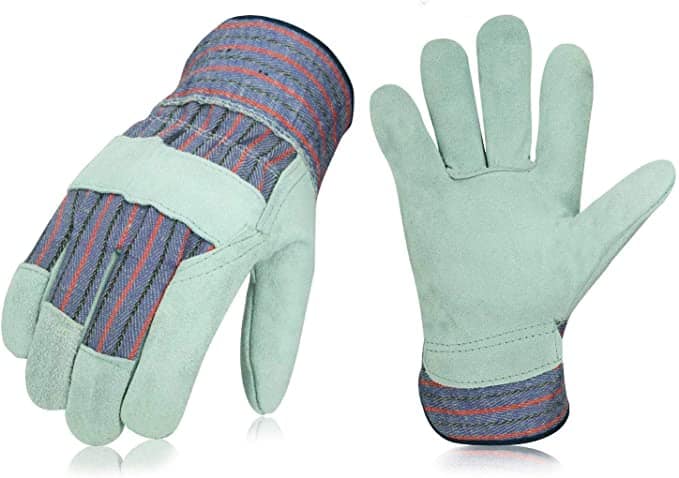
In my case, I tried to save money for the first ten years by buying things like these work gloves. Eventually, I had to upgrade to a more durable pair for heavy-duty work. However, that 12 pack is still what I use for things like:
- Gardening,
- Splitting wood and stacking it in the house,
- Cleaning out the storage under the house,
- Woodworking,
- Loading and unloading trash for the dump
- Landscaping,
- And so forth
The durable pair is what I reserve for heavy-duty work like clearing the brush on our property, handling unfinished wood or metal with sharp points, and so on.
The split-grain leather gloves work beautifully for almost all purposes, but they are thin and they will wear out, so being able to purchase a 12-pack means I can easily swap a pair when they do get a hole or start to blister.
Common Uses for Split Grain Leather
You can find split-grain leather just about anywhere. Whether or not it has a PU film or embossing is often based on its application. If you see a pair of work gloves, for example, that is rough and fuzzy in appearance, they don’t usually have a PU film.
Shoes
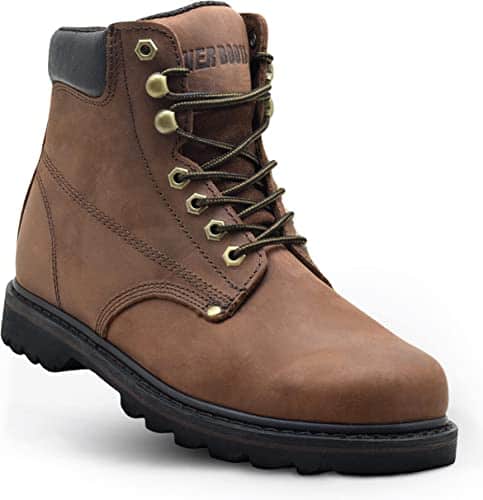
Split-grain leather is regularly used for leather shoes. If you see leather shoes that are marketed for their breathability, or you are wearing athletic shoes made from leather, they probably use split grain leather. Work boots are often made with split grain too.
Cars

Split grain leather is used in cars for low-contact areas like your headrests or door linings. So if you see that your car is marketed as having a “leather interior,” ask about which parts are top grain vs. split grain. Things like seat sections, headrests, or door linings are regularly made with split grain leather because it’s cheaper, it can be embossed to look the same, and because of the low contact area, it doesn’t wear out as quickly.
You can find split-grain leather seat covers for part or all of your car online with ease. This help prevents slipping and gives an extra layer of protection over whatever material your seats are made of originally.
Furniture
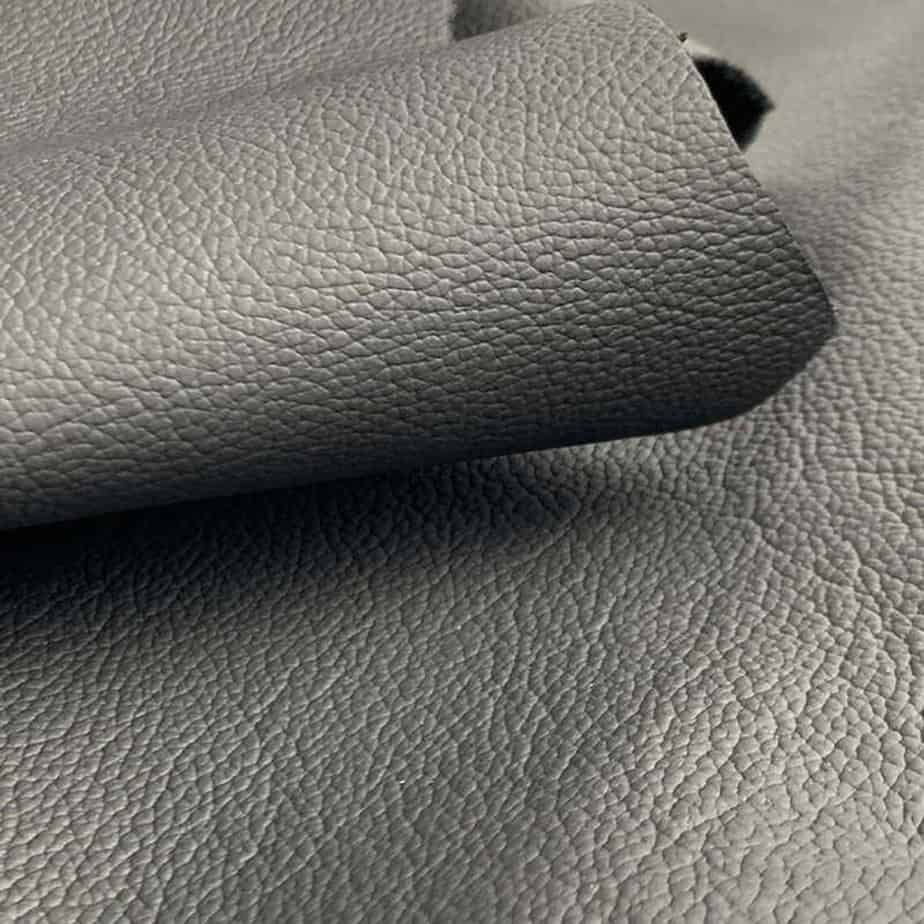
Split grain leather is often processed for furniture, usually found on the outside of a chair, couch, or loveseat.
In fact, you can buy split-grain leather upholstery and use it to upholster furniture or your car seats on your own.
Are there downsides to using split-grain leather?
Split-grain leather can look great, but the strength and flexibility will fade much faster than other leather. Split leather isn’t as flexible. You also can’t patina the surface, so if you try to use split-grain leather for home leather projects like making your own belt or passport holder, anything you coat on the surface is likely to peel or wear off over time.
This doesn’t mean that you should avoid it entirely, but you need to be prepared for the fact that if you are making something from scratch, split grain leather will wear out faster than top grain leather.
FAQ
Question: Is Split grain leather good?
Answer: Split-grain leather is good for work gloves, shoes, and handbags because of the rough, “fuzzy” texture. It is not the highest quality leather, but it works well for certain things.
Question: Are suede products the same as split grain?
Answer: Yes. If you see a product marketed as a suede leather product, it is a processed piece of split grain hide.
Is split leather genuine leather?
Answer: Split leather is sometimes referred to as “genuine leather.” So if you see a pair of work boots or a pair of gloves called “genuine leather,” it is likely split grain.
How can you tell if the leather is split?
Answer: The easiest way is to see if it has a polymer or is embossed. These processes are used to convert the hide into a natural-looking piece of leather.
Question: Does split-grain leather damage easily?
Answer: Split grain leather is not as strong as top grain, so you might be able to tear it apart by hand, but because it is weaker, it is often bonded to that PU film to improve strength and durability. Moreover, it’s usually reserved for products that don’t get as much wear-and-tear from direct handling, so it’s less likely that they will be damaged early on.
Question: How thick is split grain leather?
Answer: This depends entirely on how it was processed and the product you have. 1 oz of leather is usually equal to 1/64 of an inch, so when you see a product marketed as having a certain number of ounces, you can use that to determine how thick it is. Thin split grain leather, usually between 1 and 3 oz, is often reserved for making furniture, leather jackets, or linens. Slightly thicker leather will find its way into handbags, leather belts, purses, and other similar items.
Bottomline Upfront
Split grain leather is a piece of leather that has been split into two sections. While it is thinner and weaker than the top section of leather, it offers a cheaper alternative that can be easily strengthened with something like a PU film and used for bags, belts, jackets, furniture, and more.
Looking for more interesting readings? Check out:

